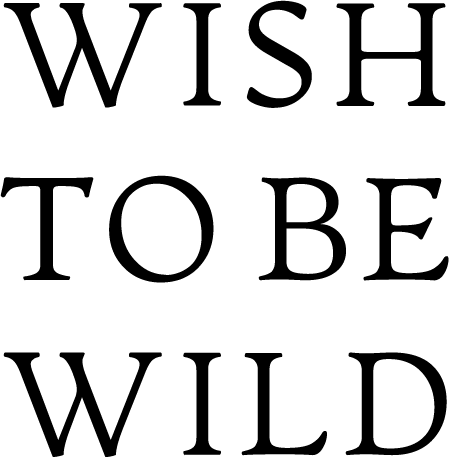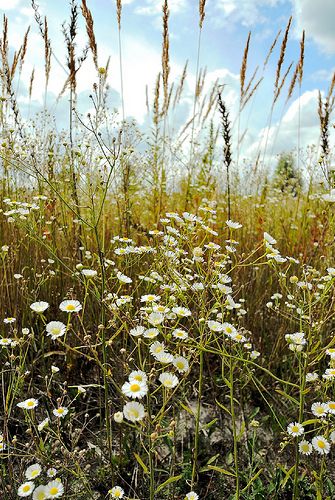Spring in Amsterdam has finally sprung, and I feel like I am slowly starting to crawl out of my dark winter hole. It’s not just me who feels as if I am being reborn in the spring. Spring is the time when plants, animals, birds, trees, and humans awaken after the dark days of winter. It’s a time for new beginnings, both literally and figuratively - and this spring we have an important task to help out some friends of ours who need all the help they can get.
I’m talking about insects! Most insects but especially pollinators such as bees, butterflies, beetles, ants, and flies (to name a few) are vital to our food system. Pollinators bring pollen from the flower of one plant to the flower of another while they are feeding off of the nectar or the pollen itself. When the pollen from the male part of the flower reaches the female part of the flower the eggs inside the flower are fertilized and the seeds and surrounding fruit of the plant begin to grow. This is how 75% of the crops that we eat are created.

Aspects of Kings Park by Helen Ansell
The past 30 years has seen a dramatic drop in insect populations (up to 76% drop in some countries!!!), which is most likely due to a combination of habitat loss through urbanization and the heavy use of pesticides in commercial agriculture. George Monbiot has written about this extensively and illustrates the structural changes that need to happen in the world to stop this Insectageddon as he calls it.
But there is also something that we can do as city dwellers. Recent studies have shown that cities are increasingly better habitats for pollinating insects than the countryside, where industrial agriculture causes crops and the surrounding areas to be heavily sprayed with pesticides. City parks, green spaces, gardens and balconies often provide a multitude of plants that pollinators love and are rarely sprayed with chemicals.
So, this is a call for all of us to help out this spring and plant some flowers and bushes that will provide insects in the city with food and habitat! By growing plants that provide food and habitat for pollinators we give them a chance to increase their populations again. Below you will find a guide to the plants that pollinators love and grow nicely in North East Europe. (Some of these also have very strong medicinal properties for humans – see how connected we all are!!!) We have also included a guide to where you can find organic plants and seeds around Amsterdam.
What to grow
Calendula (goudsbloem)– bees love these beautiful orange flowers and they are also edible for humans. They are packed full of phytonutrients and you can eat the flowers raw in salads, or dry the petals and make soothing medicinal tea.
Rosemary (rozemarijn)– this hardy bush grows well in a lot of places and gives off a lovely smell. When it flowers you will find lots of different pollinators that flock to this plant for feeding. The leaves are filled with antioxidants and are said to help immune functioning so use them in enhance the flavoring of dishes or make a nice refreshing tea with them.
Lavender (lavendel)– the lovely purple flowers of lavender are a favorite among bees and butterflies, and the scent has a calming effect on humans. Tip: fresh lavender and ginger make a magic tea combination!
Sage (salie)– sage is full of flavonoids and has antiseptic properties. Fresh sage tea works wonders on a sore throat or cold symptoms. And insects love sage too for its stalks of purple flowers.
Oregano/Marjoram (oregano/marjolein)– a great addition for your herb garden as you can use it to flavor a whole range of dishes, from Italian to Mexican. It produces tiny light pink flowers for our insect friends to enjoy as well.
Nasturtium (oostindisch kers)– just throw a couple of seeds in the earth or in a pot and nasturtiums will grow like crazy throughout the summer. You can eat the bright orange or yellow flowers and the leaves look like little sunpanels. The flowers have a kind of tunnel where the pollen grows that bees crawl right into.
If you have a big garden the best thing you can do is grow a mix of wildflowers, and let flowers such as dandelions (paardenbloem) and other native wildflowers grow.

Proteas by Helen Ansell
Where to find plants/seeds
Right across from Winkel, on the corner when you walk into the market is a flower and plant stall run by the friendliest man and his two sons (I don’t know their names!!!). You can find beautiful flower bouquets but also flowers, herbs and plants for planting in a pot or the garden. Everything is organic (they don’t use pesticides) and the owners are more than happy to advise you on what grows best where.
Organic plant market Amsterdam Noord
On April 28ththere will be a plant market (stekjesmarkt) at the Buiksloterkerk in Amsterdam Noord. You can bring and exchange seeds and plants, or buy organic plants, flowers, herbs and seeds for growing on your balcony or in your garden. There will also be food, drinks, music! A wonderful Amsterdam spring event, don’t miss it!!!
Groen Gemaal is located inside the Sarphatipark in de Pijp, right by the western entrance to the park. Open every weekday afternoon, it’s an ecological plant exchange station and garden. Anyone can come exchange seeds or plants, and volunteers provide advice on growing plants in the city.
De Bolster and Kwekerij Bastin
Both are plant and seed nursery’s that work according to organic and biodynamic principles and you can order your seeds online.
You have to travel a bit outside of Amsterdam to get here but it’s totally worth it if you are looking for original plants and flowers that you don’t normally find in garden centers. It’s run by two women who have a real passion for their trade and they have a gorgeous show garden which itself is worth the trip.

